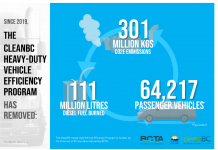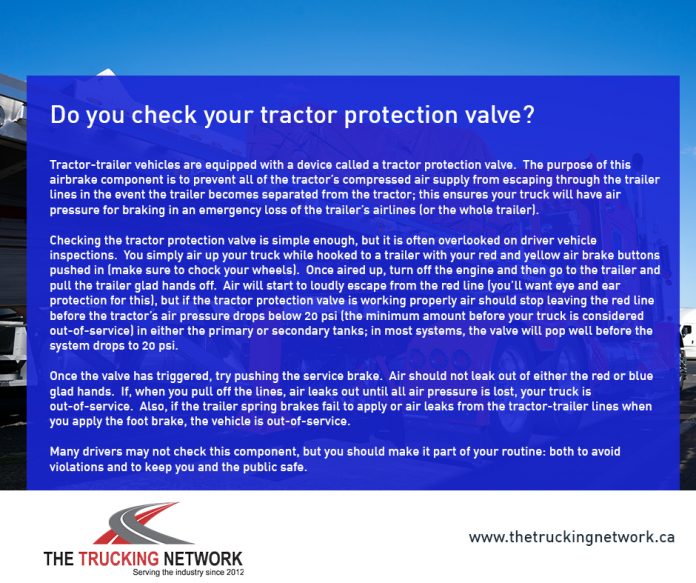Tractor-trailer vehicles are equipped with a device called a tractor protection valve. The purpose of this airbrake component is to prevent all of the tractor’s compressed air supply from escaping through the trailer lines in the event the trailer becomes separated from the tractor; this ensures your truck will have air pressure for braking in an emergency loss of the trailer’s airlines (or the whole trailer).
Checking the tractor protection valve is simple enough, but it is often overlooked on driver vehicle inspections. You simply air up your truck while hooked to a trailer with your red and yellow air brake buttons pushed in (make sure to chock your wheels). Once aired up, turn off the engine and then go to the trailer and pull the trailer glad hands off. Air will start to loudly escape from the red line (you’ll want eye and ear protection for this), but if the tractor protection valve is working properly air should stop leaving the red line before the tractor’s air pressure drops below 20 psi (the minimum amount before your truck is considered out-of-service) in either the primary or secondary tanks; in most systems, the valve will pop well before the system drops to 20 psi.
Once the valve has triggered, try pushing the service brake. Air should not leak out of either the red or blue glad hands. If, when you pull off the lines, air leaks out until all air pressure is lost, your truck is out-of-service. Also, if the trailer spring brakes fail to apply or air leaks from the tractor-trailer lines when you apply the foot brake, the vehicle is out-of-service.
Many drivers may not check this component, but you should make it part of your routine: both to avoid violations and to keep you and the public safe.






















